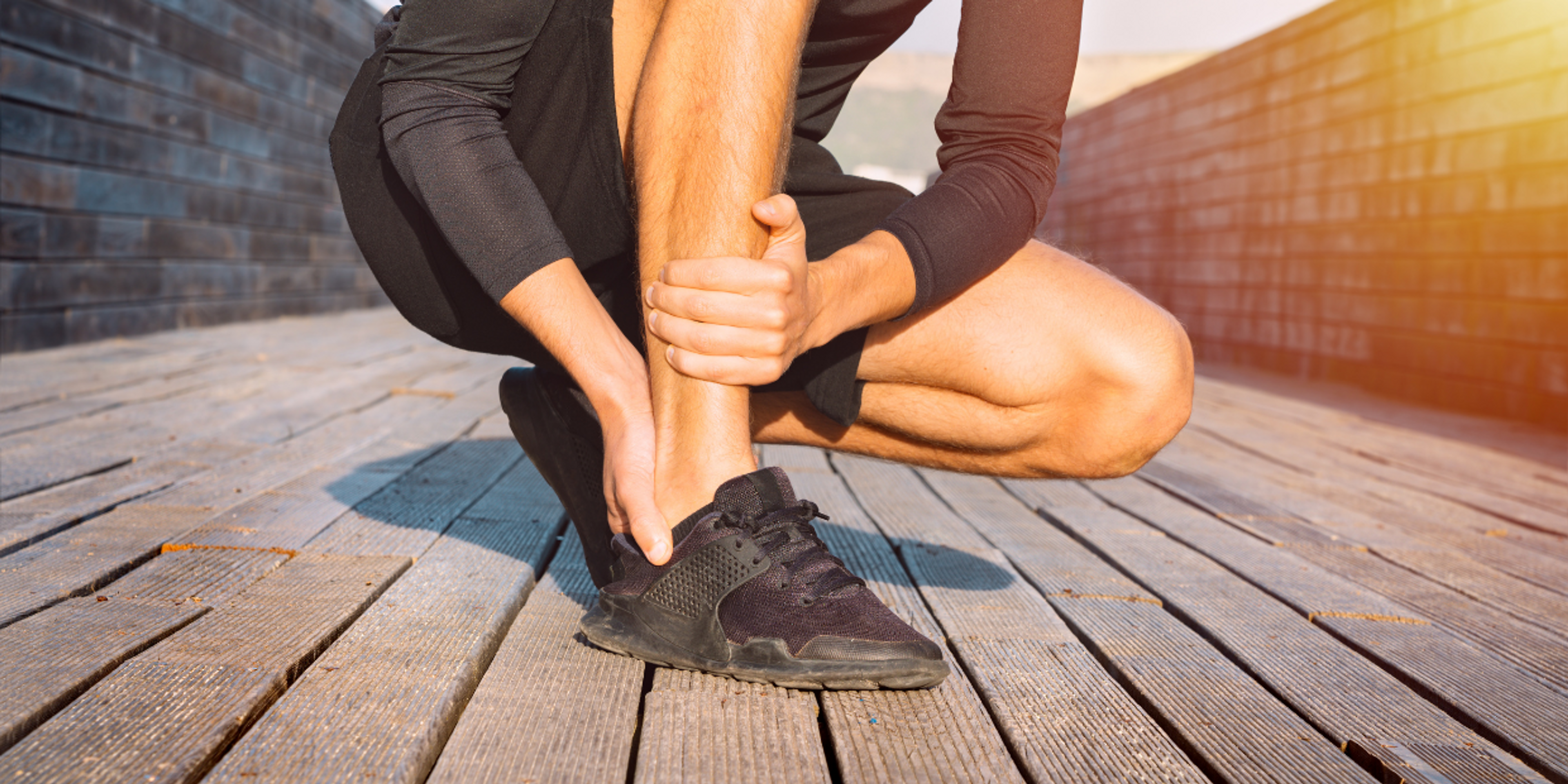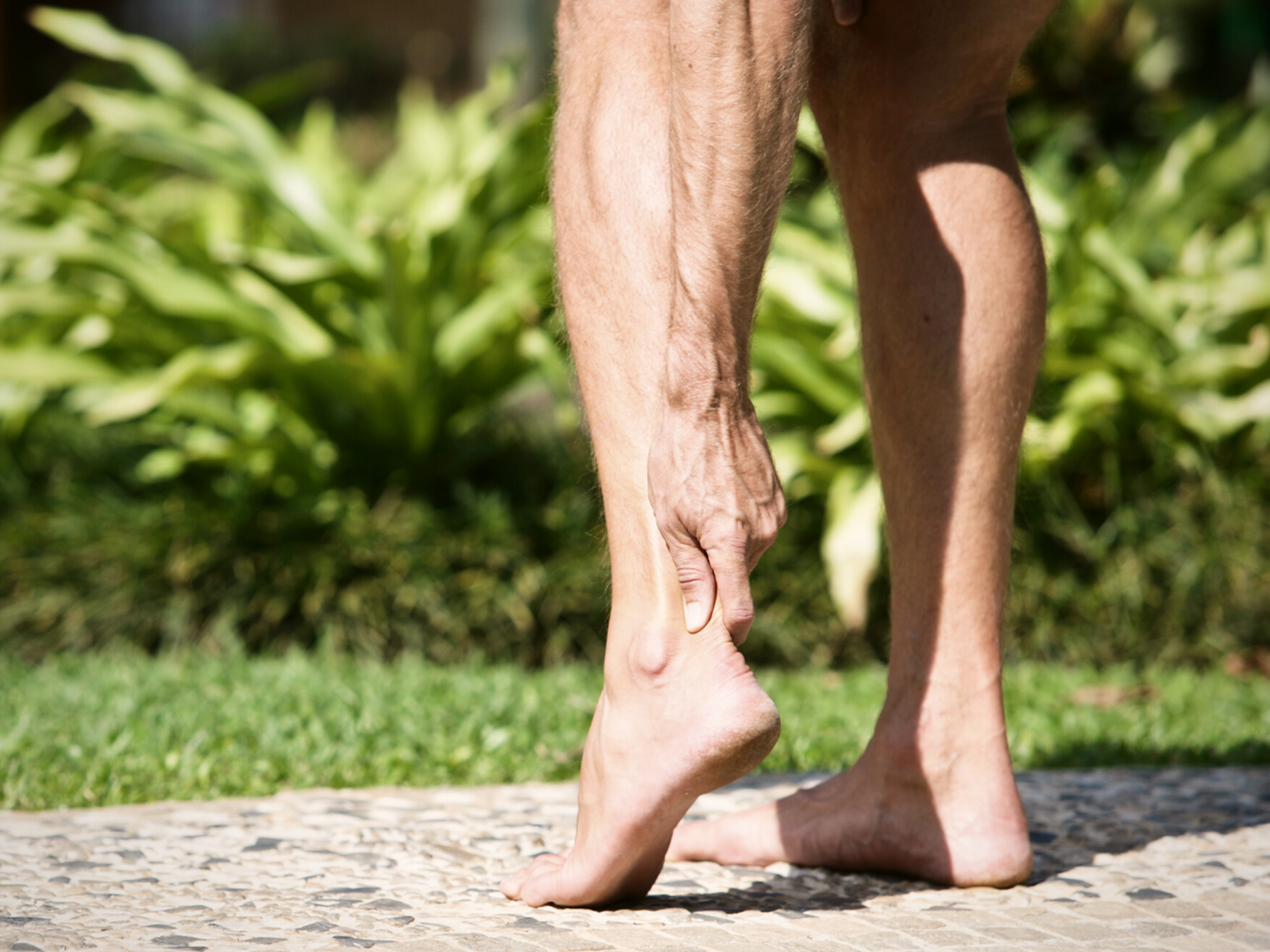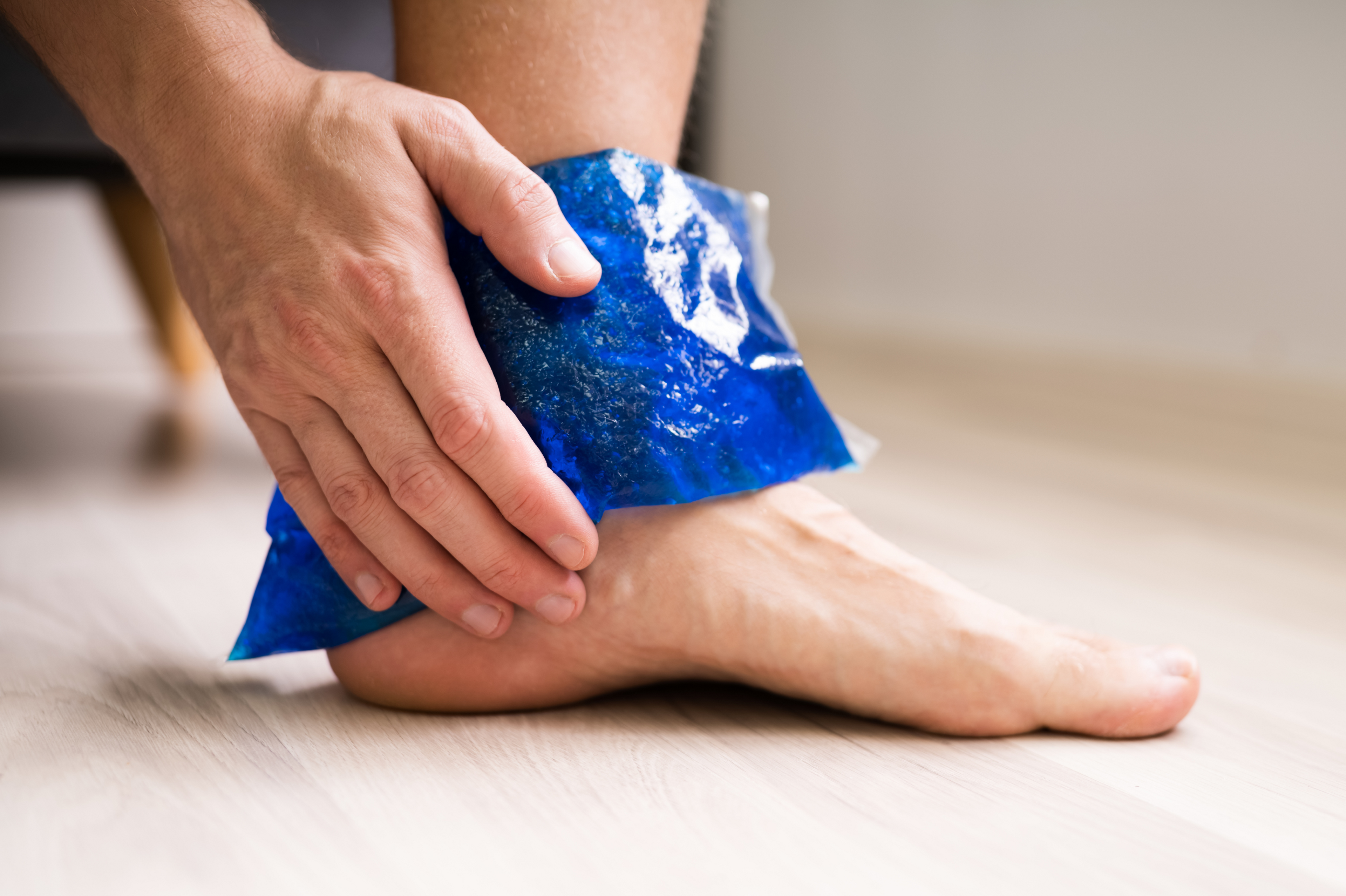Achilles tendonitis in runners: Causes, symptoms, treatments, and recovery times
In this article, you’ll learn how your Achilles tendon works, the common types of Achilles tendonitis, and how to diagnose and choose the best treatment option for you.
Achilles tendon structure and function
The Achilles tendon attaches your calf muscles (gastrocnemius and soleus) to the back of your heel bone and acts like a spring, propelling you forward when you walk, run, or jump.
It's the thickest tendon in your body and made up of thousands of collagen fibers, all tightly packed in parallel. It’s this parallel arrangement that gives it its strength.
When you have Achilles tendonitis, the affected part of your Achilles tendon loses its parallel structure, causing it to lose strength.
What is Achilles tendonitis or tendinopathy?
Achilles tendonitis, or tendinopathy, is a common overuse injury involving your Achilles tendon, causing it to lose strength and resulting in persistent pain.
It often affects athletes participating in running and jumping sports.
What’s the difference between Achilles tendonitis and tendinopathy?
There is no difference; they both describe the same condition.
Why the different names, then?
Medical terms ending in "itis" generally suggest inflammation as the cause. Studies reveal that ongoing tendon pain may not be linked to inflammation, as previously believed. So, researchers now use the term "tendinopathy" instead of "tendonitis" to provide a more accurate understanding of the condition.
In our articles, we use these terms interchangeably to refer to the same condition.
Types of Achilles tendonitis
There are two main types of Achilles tendonitis or tendinopathy: Mid-portion and insertional. You can distinguish between them by where you feel the pain.
Where you feel the pain
If you have Achilles tendonitis, you will usually feel pain in one of two areas. Either:
- In the middle of your tendon – called mid-portion Achilles tendonitis, or
- Where your tendon attaches to your heel bone – called insertional Achilles tendonitis.
Treatment for each type varies slightly because insertional Achilles tendonitis tend to be a lot more sensitive to compression. This is why we've created different rehab plans for insertional vs. mid-portion Achilles tendonitis in the Exakt app.
Achilles tendonitis causes
The main cause of Achilles tendonitis is overuse – doing too much exercise or activity.
But, there are other causes too – for example, doing too much stretching, wearing the wrong shoes, and even certain types of medication can lead to the condition.
Achilles tendonitis from overuse
You can develop Achilles tendonitis by overloading the tendon suddenly, during a single hard training session, or slowly over a more extended period.
How does sudden overload cause Achilles tendonitis?
Sudden overload happens when your Achilles tendon isn't strong enough to handle the volume or intensity of the activity you’re doing, and it becomes injured.
It often occurs during calf muscle-intensive exercises or training sessions, for example:
- Plyometrics (jumping or hopping)
- Weighted calf raise exercises
- Hill running
- Fast running
How does gradual overload cause Achilles tendonitis?
Gradual overload of the Achilles tendon usually happens for two reasons:
- Not allowing enough recovery time between running sessions
- Doing too many high-intensity training sessions in short succession
Rest is crucial for injury prevention because when you exercise, your body tissues, including your Achilles tendon, experience micro-injuries.
Your body relies on the rest period between training sessions to heal from these micro-injuries and restore strength. So, if you don’t allow time to recover fully, you increase your risk of developing an overuse injury like Achilles tendonitis.
Apart from overuse, excessive compression can also lead to Achilles tendonitis.
Achilles tendonitis from excessive compression
When you move your foot and ankle, your Achilles tendon naturally compresses against your heel bone. However, excessive compression of the Achilles tendon in this area has been shown to cause Achilles tendonitis.
Excessive compression of the Achilles tendon usually leads to insertional Achilles tendonitis.
Common causes of excessive Achilles tendon compression include:
1. High foot arches
Having a high foot arch increases the tension on your Achilles tendon due to the angle of the heel bone. This extra tension can excessively compress your Achilles tendon against the heel, leading to Achilles tendonitis.
If you’re a runner with high foot arches, it’s important to choose your shoes wisely.
If this relates to you, a higher heel-to-toe drop may be helpful. That’s because your heel will be higher off the ground than your toes, which loosens some of the tension in your Achilles tendon and reduces its compression at the heel.
2. Excessive calf and Achilles stretches
There’s a common misconception among athletes that tight calf muscles can cause Achilles tendonitis and that calf stretching helps to treat it.
But tight calf muscles usually don't cause Achilles tendon issues. Instead, it's the overstretching of your calves that can lead to problems.
Here’s why.
To stretch your calf, you need to place your foot in a deep dorsiflexion position (toes to shin), which increases the compressive forces on your Achilles tendon. Doing this excessively can irritate the tendon and lead to injuries like insertional Achilles tendonitis.
That’s why it’s usually best to avoid calf stretches if you have insertional Achilles pain, especially in the early stages of your injury.
Other causes of Achilles tendonitis and pain
Achilles tendonitis symptoms
The most common symptoms of Achilles tendonitis are pain and stiffness in the Achilles tendon.
But, there are other signs associated with these symptoms that are typically present; they include:
- It hurts when you press on the injured area of the tendon
- You notice a bump or swelling where you feel the pain
- The back of your heel or Achilles tendon feels stiff and/or painful in the morning, but as the day goes on, it warms up, and the discomfort eases; in severe cases, your tendon may feel uncomfortable throughout the day and make you hobble (limp when you walk)
- If you’re a runner, your symptoms typically feel more pronounced at the beginning of a run, usually disappear as your tendon warms up, then discomfort returns and feels worse than before a few hours later
- Calf stretching may feel good in the moment but usually worsens your symptoms several hours later, especially if you have insertional Achilles pain; mid-portion tendonitis tends to tolerate stretching better
- If you continue to train and irritate your tendon, your pain becomes more persistent and stops you from running, and eventually, even walking may hurt
Remember, not everyone will experience all or the same symptoms.
Some people only experience pain, others only stiffness, and some people may feel both. Every case is unique and should be treated as such.
How to diagnose Achilles tendonitis
To successfully recover from Achilles tendonitis, you first need an accurate diagnosis. A physical therapist or doctor can help diagnose your Achilles tendonitis through a thorough assessment which combines the following parts:
1. An in-depth conversation about your condition
During this portion of the assessment, your doctor or physical therapist will ask questions and listen attentively to find out how your Achilles pain started, how your symptoms react to different activities, and go through your medical history to determine if anything could have contributed to your Achilles pain.
2. Movement tests
They will ask you to perform a few movements that work your Achilles tendon (like calf raises) to assess how it reacts.
3. Hands-on assessment
By pressing on your Achilles tendon, they will identify if the pain is coming from your Achilles tendon and, if so, where it is located. If there’s no pain in the tendon, it may not be Achilles tendonitis.
4. Special tests
MRI, X-rays, or ultrasound scans are usually not necessary, but your doctor may order them if:
- They suspect a more serious injury,
- Your symptoms don’t fit the typical pattern for Achilles tendonitis, or
- You’re not recovering as expected.
Achilles tendonitis recovery time
In most cases, you can recover from Achilles tendonitis within:
- 12 to 16 weeks - if you start the right treatment within a few weeks of your Achilles tendonitis symptoms first appearing
- 6 to 18 months - if you had Achilles tendon pain for longer than a month before starting the correct treatment
Why does recovery from Achilles tendinopathy take so long?
Recovering from Achilles tendonitis can often be frustrating because tendons are trickier to treat than other structures in your body. A few reasons for this are:
- Tendons have a relatively poor blood supply
- Tendons are made primarily of collagen fibers
- Producing and strengthening collagen fibers takes much longer than other tissue types, e.g. muscle.
Another reason is that people often don’t follow the correct treatment program, leading to ongoing tendon irritation.
Prolonged irritation of your Achilles tendon causes more structural changes, increasing the time it takes to strengthen your tendon and slowing your recovery.
Best treatment for Achilles tendonitis
Research suggests the most effective treatment for Achilles tendonitis is a combination of rest and exercise tailored to the individual (you). From the evidence, a well-rounded rehab plan for Achilles tendonitis should typically include the following:
Relative rest
Aim: To help your tendon pain settle
How to do this: Limit aggravating activities, adjust your training program as you progress, and wear shoes with heels or heel-lift inserts to temporarily reduce compression forces and strain, especially if you have insertional Achilles tendonitis. Find examples of how to adapt your running for Achilles pain here.
A slow, progressive strength training plan
Aim: Gradually restore function and strength in your tendon
How to do this: Focus on strengthening your calf muscles and Achilles tendon to improve your Achilles tendon's ability to handle load and compression, adjusting your exercises as you progress. For instance, start with calf raises on the floor and gradually progress to calf raises on a step for more compression.
You can find a detailed explanation of how to adapt your calf raise exercises to suit your case of Achilles tendonitis here. Restoring your Achilles tendon's strength is one of the best ways to prevent Achilles tendonitis from recurring.
General strength and control exercises
Aim: To help distribute the load effectively when running and jumping
How to do this: Develop and strengthen your core and supporting muscles, including the glutes, hamstrings, and core muscles.
Mobility and range of movement exercises
Aim: To minimize the strain on your Achilles tendon
How to do this: Enhancing and sustaining optimal mobility in your lower body joints and muscles, but avoiding calf stretches during early rehab.
Movement retraining
Aim: Improve your overall movement efficiency
How to do this: Learn how to use your whole kinetic chain (all the interconnected parts of your body) optimally while running, specifically during the landing phase, to reduce the tension and compression in your calf and Achilles tendon.
The Achilles rehab plan in the Exakt app includes all of these components. It starts with low-load exercises that help settle your pain, then slowly increases the exercise intensity as your tendon strengthens and heals. There are different programs for insertional Achilles tendonitis and mid-portion Achilles tendonitis.
Other treatments for Achilles tendonitis: What to try and what to avoid
You may encounter other treatments for Achilles tendonitis, and it can be difficult to know which ones to try or to avoid, especially with so many different options and opinions out there.
Here is a list of common modalities that may be worth trying and ones you should avoid:
- Shockwave therapy: This has become a popular treatment in clinics, but research shows contradictory results. So, although it may be helpful in some cases, it might not work for you.
- Shoes and inserts: Wearing shoes with heels or heel lifting inserts can reduce the load on the Achilles tendon and help your pain settle.
- Ice: Ice can help reduce pain, but it cannot make your tendon heal any faster and you do not need to ice your Achilles tendon to recover from Achilles tendonitis. If you choose to use it, it’s best to apply ice intermittently (when you feel you need it).
- Massage: Doing gentle massage over your calf, foot, and ankle structures may help reduce pain, but it doesn't help to strengthen your tendon. Conversely, vigorous tendon massage should be avoided as it irritates the tendon and can increase your pain.
- Calf or Achilles stretches: As discussed earlier, stretching your calves and Achilles tendon can worsen your pain and is not a priority for Achilles tendonitis rehabilitation.
- Complete rest: This can calm your pain initially, but resting for prolonged periods is not advised because it can cause your tendon to lose more strength, which increases your recovery time.
- Electrotherapy (like ultrasound): This treatment is no longer recommended or supported by the current research and should be avoided.
- Anti-inflammatory medication (like ibuprofen and naproxen): Usually, anti-inflammatory medications do not help reduce tendon pain. Recent evidence also suggests these medications may interfere with tendon healing, so it’s best to avoid them when you have tendonitis. Always speak to your doctor before starting or changing any medication.
Conclusion
If you’re dealing with Achilles tendonitis, understanding the condition and starting an effective treatment plan as soon as possible is the key to accelerating your recovery.
A tailored, well-rounded rehab plan that balances rest and progressive exercise is best to help you heal – regardless of what caused your injury or how long you’ve had pain.
When your rehab is complete, an injury prevention plan can be useful to keep you on track with your training and injury-free.




